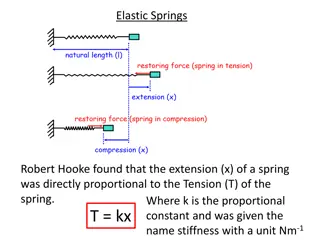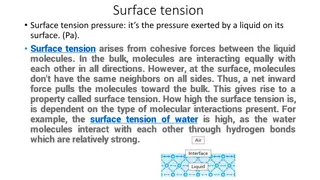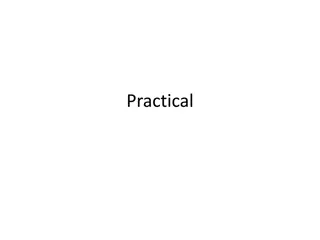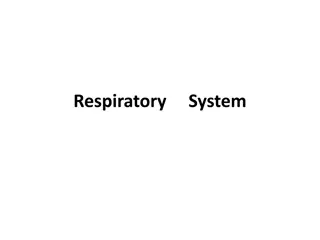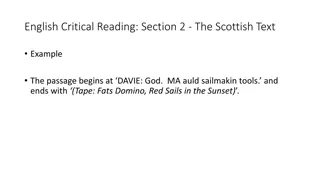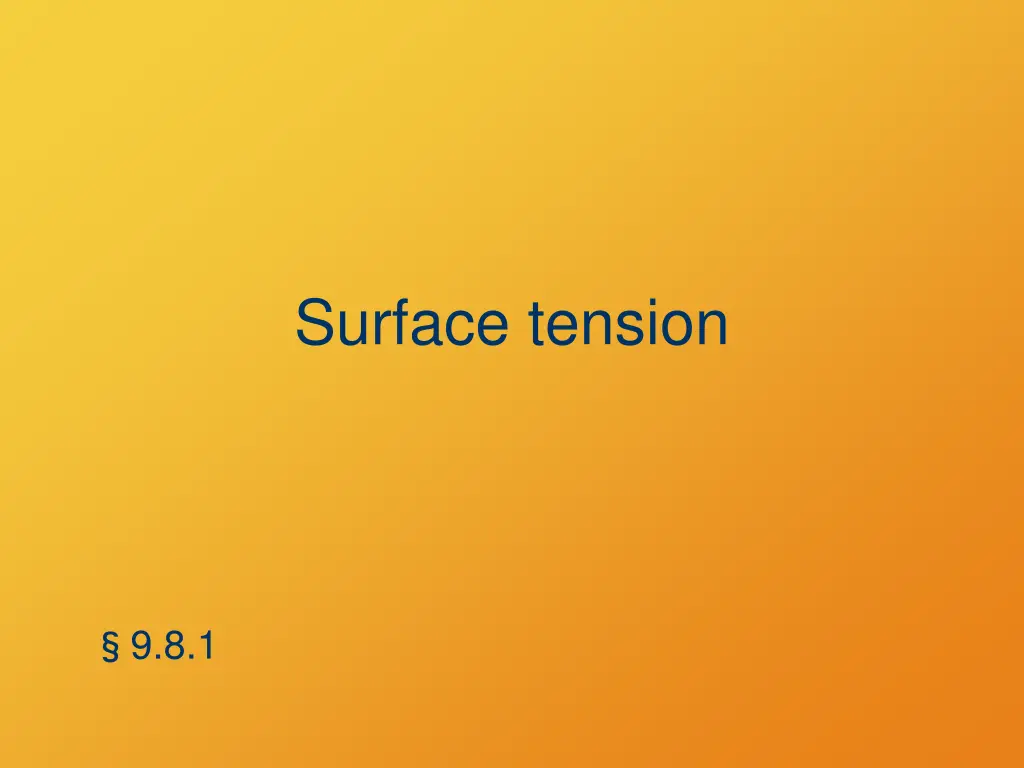
Understanding Surface Tension and Fluid Viscosity
Explore the concepts of surface tension, instability, energy per area, capillary action, contact angles, viscosity, and Reynolds number in fluids. Learn about the forces and phenomena governing the behavior of liquids at a molecular level.
Uploaded on | 2 Views
Download Presentation

Please find below an Image/Link to download the presentation.
The content on the website is provided AS IS for your information and personal use only. It may not be sold, licensed, or shared on other websites without obtaining consent from the author. If you encounter any issues during the download, it is possible that the publisher has removed the file from their server.
You are allowed to download the files provided on this website for personal or commercial use, subject to the condition that they are used lawfully. All files are the property of their respective owners.
The content on the website is provided AS IS for your information and personal use only. It may not be sold, licensed, or shared on other websites without obtaining consent from the author.
E N D
Presentation Transcript
Surface tension 9.8.1
Surface can be Unstable compared to the bulk liquid
Surface minimizes area It is tense Force per unit length = tension Unit = N/m
Energy per Area N/m = J/m2 Energy penalty per area of surface
Cavity in a liquid Surface area 4 r2 Energy 4 r2 Tension causes an inward force Pressure difference 2 /r
Wetted capillary Higher pressure on concave side 2 /r = gl 2 l = gr l
Contact angle Liquid in contact with a surface Serway & Vuille, Fig. 9.42 good adhesion poor adhesion
Capillary with contact angle Contact angle changes the curvature 2 cos /r = gl 2 cos l = gr l
Viscosity fluid resistance to flow 9.8.3
How Its Defined Force required to slide a fluid layer past another Fd Av = Serway & Vuille Fig 9.47 F = force v = speed A = area d = distance to motionless layer
Reynolds Number Dimensionless quantity indicating propensity to turbulence vd RN = ratio of inertial to viscous influences Laminar flow if RN < 2000 Turbulent flow if RN > 3000
Turbulent and Laminar Flow Irregularities cause turbulence at lower Reynolds numbers Image: AASHTO













